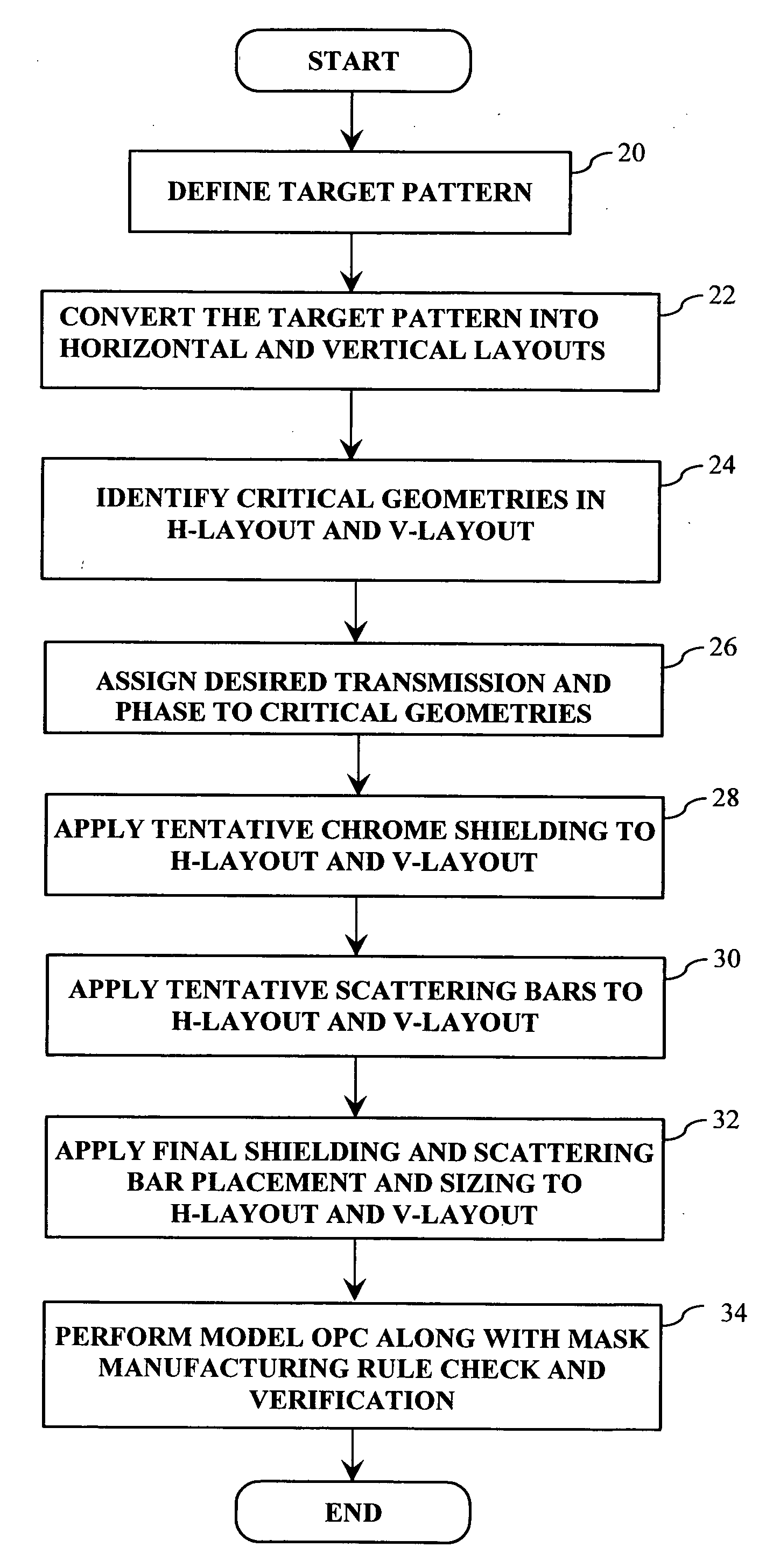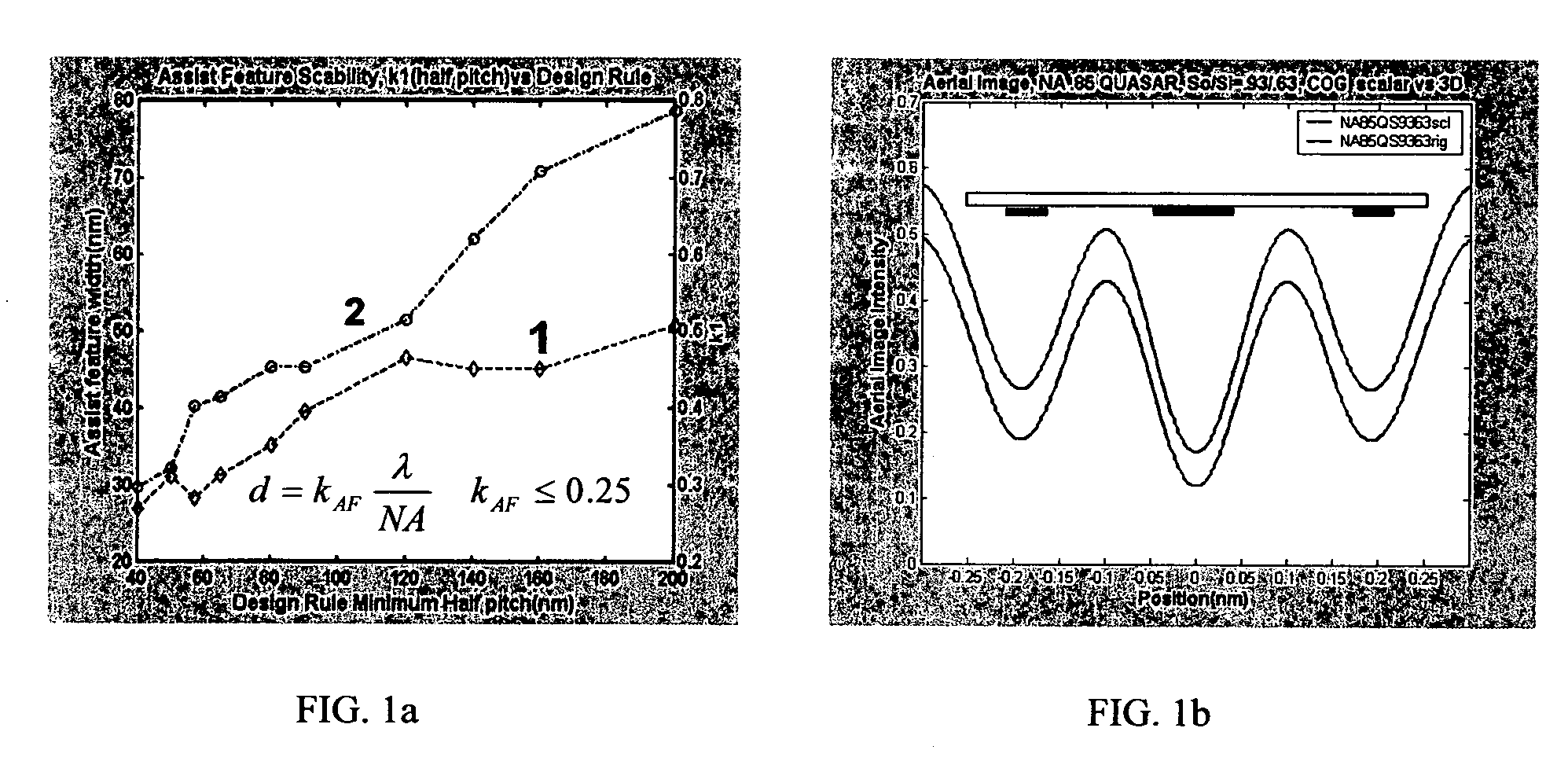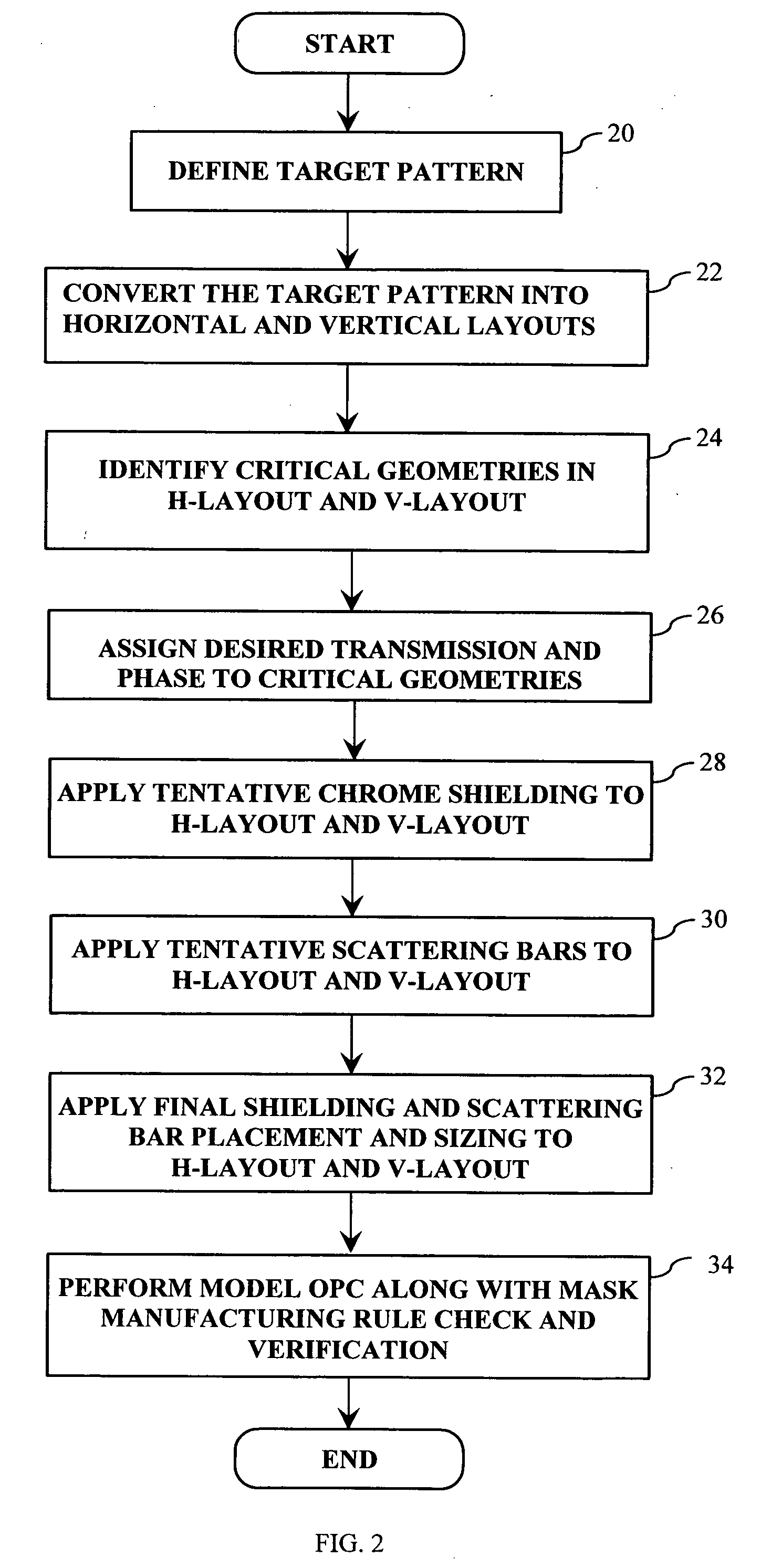Method, program product and apparatus for performing double exposure lithography
a program product and lithography technology, applied in the field of double exposure lithography, can solve the problems of sb scalability, printability, and becoming increasingly difficult to reproduce the target pattern on the wafer, and achieve the effect of improving the sb scalability and printing quality
- Summary
- Abstract
- Description
- Claims
- Application Information
AI Technical Summary
Benefits of technology
Problems solved by technology
Method used
Image
Examples
Embodiment Construction
[0030] As explained in more detail below, the double exposure technique of the present invention decomposes the target pattern into multiple tri-tone masks, which when illuminated provide for improved scatter bar trimming and improved imaging performance.
[0031] More specifically, FIG. 2 is an flow-chart illustrating a first embodiment of the present invention. Referring to FIG. 2, the first step (Step 20) in the process is to identify and read in the target pattern which is to be imaged on the substrate (or wafer, etc.). The target pattern can be represented in, for example, GDSII design data or any other suitable data format. The next step (Step 22) is to convert the target pattern into horizontal (H) and vertical (V) layouts, and identify critical geometries (Step 24) in both the horizontal and vertical layouts. It is noted that when separating the target design into H and V layouts, initially the layouts are identical and correspond to the target pattern. However, as explained i...
PUM
 Login to View More
Login to View More Abstract
Description
Claims
Application Information
 Login to View More
Login to View More - R&D
- Intellectual Property
- Life Sciences
- Materials
- Tech Scout
- Unparalleled Data Quality
- Higher Quality Content
- 60% Fewer Hallucinations
Browse by: Latest US Patents, China's latest patents, Technical Efficacy Thesaurus, Application Domain, Technology Topic, Popular Technical Reports.
© 2025 PatSnap. All rights reserved.Legal|Privacy policy|Modern Slavery Act Transparency Statement|Sitemap|About US| Contact US: help@patsnap.com



